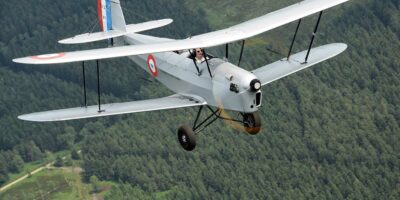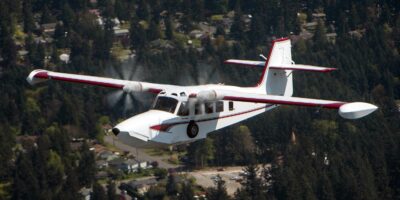Pilots make a distinction between IFR and ‘hard IFR’, which makes little sense. The gist of it is that some instrument-rated pilots are willing to file and fly IFR – except when visibility and ceilings get close to published minima. I get the concept of ‘personal minimums’ and endorse the principle of defining individual and changeable limits based on currency, avionics and psychic comfort.
But the idea of launching into Instrument Meteorological Conditions (IMC) without being fully prepared to fly an approach to minimums at your destination is a sucker’s bet. Even with the modern weather tools available to us today, there’s no guarantee that the actual conditions will be what you expect them to be. And the stress of flying IFR knowing that you’re unable or unwilling to perform the full range of tasks seems like a highly questionable strategy.
So what’s hard IFR anyway? Is it IMC during the cruise phase of flight? Certainly smooth, clear air is enjoyable to fly through. And the ability to fly near the clouds, but not in them, is one of the most sublime aspects of IFR flying. Yet the difficulty factor of keeping the wings level and navigating in IMC during cruise is low, especially with an autopilot. So IMC during cruise doesn’t seem like it should be a showstopper for IFR pilots.
“The point is that the weather turned out to be far worse than forecast”
Some IFR pilots treat their tickets as a licence to fly ‘from bad weather to good weather’. Psychologically, it’s a lighter burden knowing that you’re flying toward improving conditions. There’s light at the end of the tunnel. You’re on the way to VMC, and you’re escaping the low clouds behind you. This kind of information makes pilots feel relaxed and happy.
But taking-off in weather that’s low enough that you’re unwilling or unable to return to your starting point is dubious. If there’s a mechanical or other problem soon after take-off, how far will you have to go to find weather conditions that meet your personal minimums? Is an immediate return even an option?
Looking back on my last year of IFR flying, I only had to make one honest-to-goodness missed approach – and it came as a near total surprise because the weather at my destination at the time I began the approach wasn’t IFR at all. It was marginal VFR: five miles visibility and a ceiling of 1,400ft.
The complication at this mountain airport turned out to be a fog bank that went all the way to the ground at the approach end of the runway, and it was invisible to the automated weather station located nearly a mile away at the centre of the airport.
I flew the GPS approach in mostly clear air, saw some snow-covered airport hangars five miles away, then descended into the fog a mile from the runway threshold and visibility dropped to zero. A missed approach was a reflex, the only option, and yet it was unexpected because all indications had pointed towards an uneventful approach and landing.
During the two-hour flight there, ADS-B weather had provided a steady stream of good news with conditions steadily improving from low IMC, to IMC, to marginal VMC. That was an unmistakably positive trend – yet it still resulted in a missed approach at the published decision altitude.
Other low-IMC encounters happened where I least expected them. During an aerial video recording session in the AOPA Sweepstakes RV-10 last year, I took off from my home airport in misty rain with an 800ft ceiling. My intention was to make a video showing the details of the Advanced Flight Systems/Avidyne panel during two quick GPS approaches and an ILS. My main concern at the start of the flight was that the weather would improve and I’d miss my chance to record in actual IMC.
As things turned out, I needn’t have been worried about sunshine. Moderate to heavy rain moved into the area, visibility dropped, and I ended up making two ‘no kidding’ missed approaches on the ILS. I was finally able to get in on the third approach but just barely. The video flight itself wasn’t particularly stressful. The avionics provided excellent situational awareness, the aeroplane had full fuel tanks, and other airports in the region had better weather if I needed to divert. The point is that the weather turned out to be far worse than forecast, and it remained that way all day. If I had been counting on the predicted improvement, I’d have been in a jam.
The low-IMC approaches I’ve flown recently have actually been relatively straightforward. Air traffic controllers know the weather is bad and set you up for long, straight-in final approaches. Low atmospheric pressure makes for unrippled air, and the aircraft seems to ride the glideslope as if on rails.
Aviation is full of plot twists, and things seldom seem to go exactly as planned. Stack the deck in your favour by arriving at your destination when the temperature and dew point are getting farther apart, not closer together. Take advantage of IFR approaches that include vertical guidance. And don’t expect when you file IFR that you’ll only put a toe in. Be ready to swim in the deep end of the pool because you just might have to…
RV-4 pilot, ATP/CFII, specialising in tailwheel and aerobatic instruction
[email protected]







